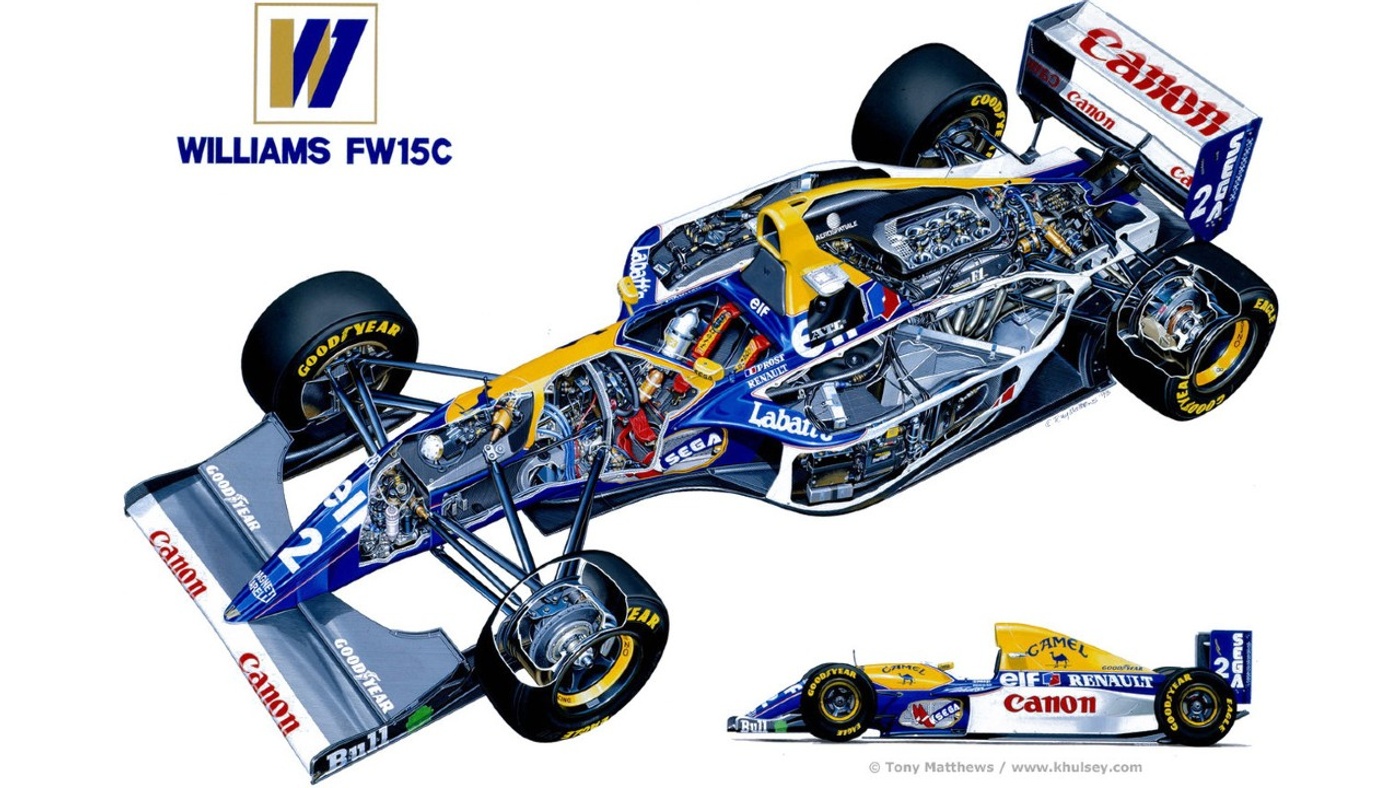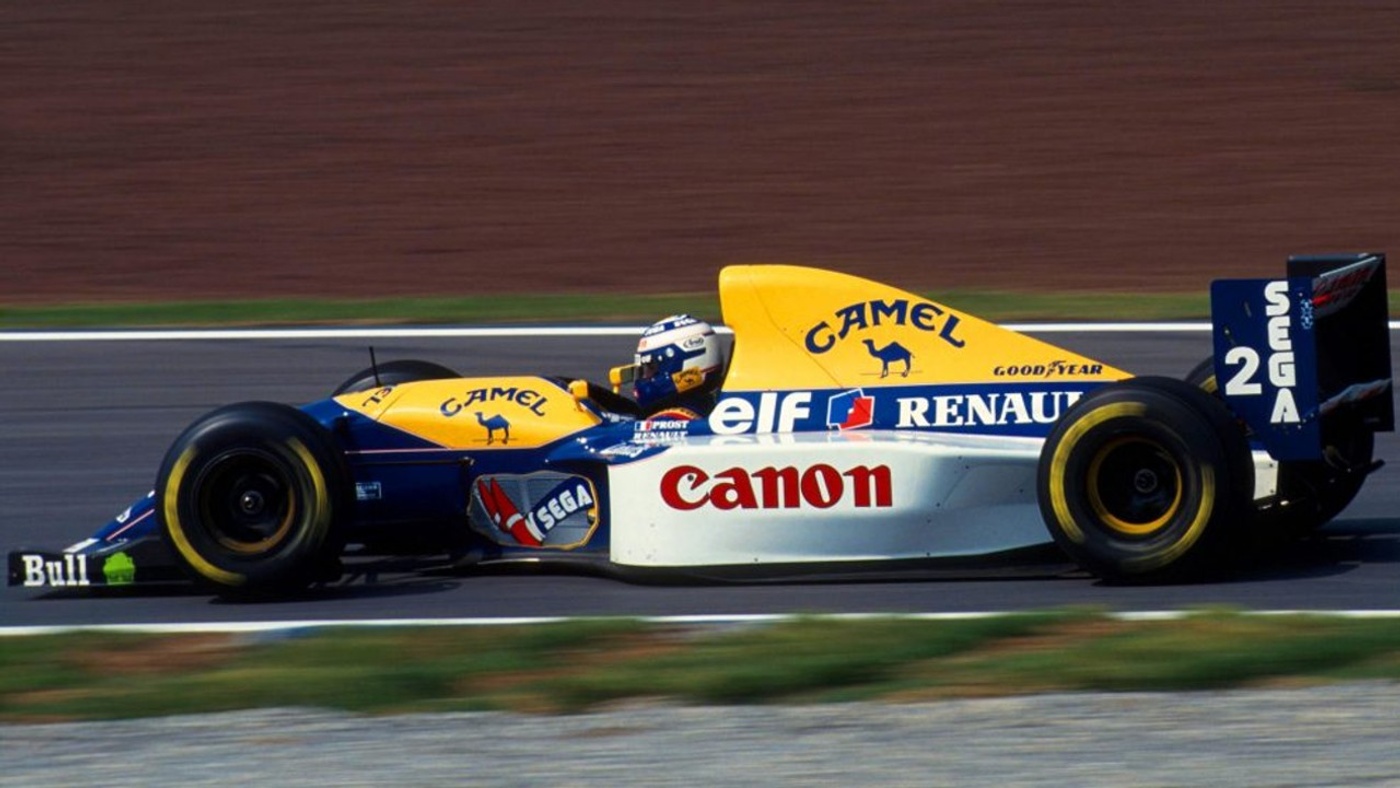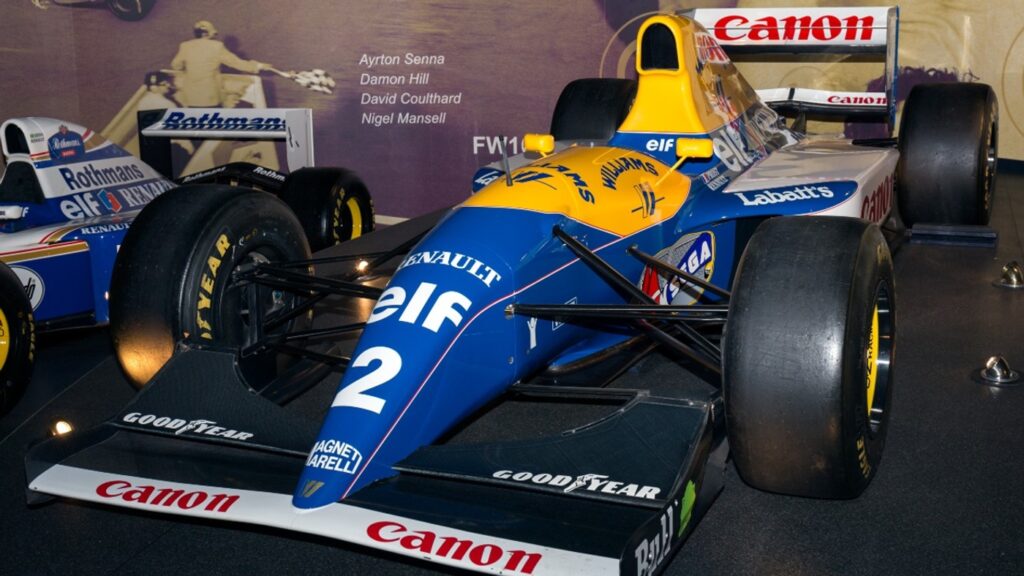The Williams Renault FW15C, nicknamed the ‘Little Airbus’, was a race car that won the championship with Alain Prost in the 1993 Formula One season. It was equipped with the most advanced technology of its time and is considered one of the most impressive machines in Formula One history. The FW15C showed a 12% improvement in aerodynamics compared to the previous model, and the active suspension system allows the vehicle’s pitch and height on the surface to be continuously adjusted. These features helped the vehicle to provide superior stability in corners and on straight roads. The traction control system also optimized acceleration by preventing wheel spin.
Revolutionary Technology of the FW15C: CVT Automatic Transmission System

The most striking innovation was the continuously variable ratio (CVT) automatic transmission system. This system kept the vehicle’s engine speed at 13800 RPMat all times, eliminating the need for the driver to shift gears. This gave the FW15C’s rivals around 2.5 seconds per lap, a huge advantage.
Formula 1 and Technology Constraints

But Formula One management did not welcome these advanced technologies. The International Automobile Federation (FIA) has banned active suspension, automatic transmission and traction control systems. With this decision, technologically superior cars such as the FW15C had to be withdrawn from the race track and replaced by cars with simpler designs.
This has raised questions about the competitive nature of Formula One and its approach to technological progress. While some think these bans are fair, others argue that racing should encourage technological innovation. Do you think Formula 1 should move forward by restricting or supporting technology? We look forward to your comments.
Source: F1 Technical , Formula One


